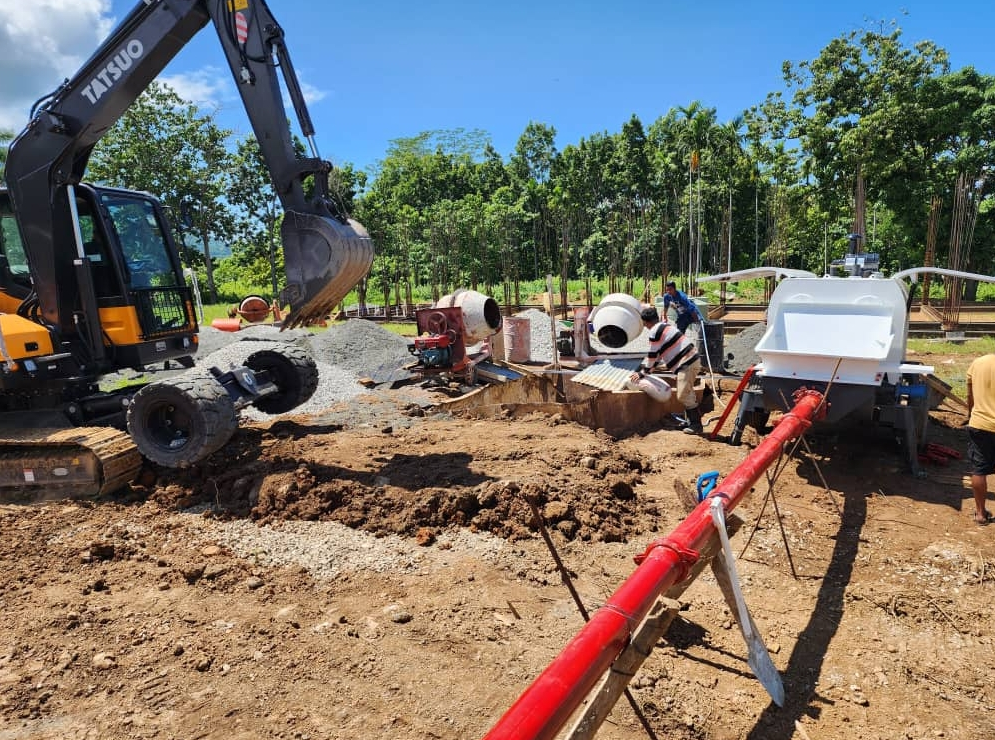Let’s cut through the noise and the tired old sales pitches. The debate over concrete line pumps for low-rise buildings—those projects under five stories like subdivisions, strip malls, and warehouses—is plagued by outdated thinking. There’s a stubborn contingent that still pushes the stationary pump as the “serious” choice, the “heavy-duty” option. That’s a fantasy. For the overwhelming majority of low-rise construction, the portable concrete pump isn’t just a good alternative; it’s the only logical one. The stationary pump, with its cumbersome setup and geographic inertia, is a relic that actively sabotages the efficiency, speed, and profitability that define successful modern operations. This isn’t a matter of preference; it’s a matter of basic arithmetic and operational intelligence.
The Portable Pump: Unrivaled Agility for the Modern Jobsite
The premier advantage of the portable pump is its radical agility. This machine arrives on a trailer and is pumping concrete within an hour. It doesn’t need a dedicated, pre-planned foundation or a massive footprint. It can be positioned for optimal reach, moved around obstacles, and redeployed in an afternoon. This mobility grants what can only be called <strong>operational sovereignty</strong>. You are no longer a slave to the location of a fixed machine. You dictate the flow of the pour based on what makes sense for the crew and the structure, not based on the limitations of your pump’s piping. This single feature dismantles the entire argument for stationary pumps in a multi-site, fast-paced low-rise environment. The financial impact is profound. You eliminate the immense labor cost of laying hundreds of feet of pipeline and the subsequent cleanup. You eliminate the damage to site access and landscaping from that pipeline. The portable concrete pump’s boom does the work of a small army, compressing timelines and slashing the indirect costs that silently strangle project budgets.
The Stationary Pump’s Last Stand: A Niche of Its Own Making
Proponents of stationary pumps will stammer about raw output and high-volume pours. This is a niche argument masquerading as a universal truth. Sure, if you’re pouring a continuous, monolithic foundation for a nuclear power plant in one single, uninterrupted go, a massive stationary pump might have its place. For a low-rise building? It’s engineering overkill. The supposed benefit of higher volume is completely negated by the sheer logistical drag of the setup. By the time a crew has finished wrestling with and securing a small mountain of pipe, the portable pump has already finished its first pour and is prepping for the next. The stationary pump for concrete creates a rigid, inflexible workflow. Any change in the pour sequence becomes a logistical nightmare. It anchors your entire operation to one spot, creating a bottleneck for other trades and site activities. In a sector defined by adaptability, the stationary pump is a concrete-covered boat anchor, an anachronism that prioritizes brute force over intelligent design.
The Undisputed Verdict for Low-Rise Dominance
When you run the real numbers, the competition isn’t even close. The total cost of ownership for a portable pump is categorically lower. Its versatility allows it to generate revenue across multiple projects in the time a stationary unit is still being set up on one. The residual value of a mobile asset is always higher than that of a fixed, single-purpose one. Investing in a portable pump is an act of future-proofing your business. It equips you to handle the diverse, scattered, and fast-turnkey projects that constitute the bread and butter of the low-rise market. It provides a tactical advantage in bidding and project management that a stationary pump can never offer. The conversation should no longer be about which pump to choose. For intelligent, profit-driven low-rise construction, the portable concrete pump has already won the war. The stationary pump is a dinosaur, and the meteor of efficiency has already hit.

Comments
No comments yet. Be the first to react!